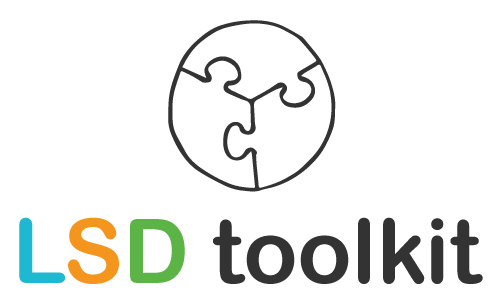Your story does not come out of the blue. And there are countless ways to write such a story. To help you with the design process, we have developed a step-by-step plan, including an example. We (also) make use of the techniques from design thinking.
Step 1.Framing
Framing is a technique from Design thinking. This is discussed in the last part of this LSD series. In short, you make an assumption for the cause of the problem and come up with a mindset for the solution. You frame the problem. You choose an aspect of the crash and a possible solution that you will investigate. An example from my work practice where I assisted the Customer Service manager of an insurance company:
Our customer base is declining but we don’t know exactly why. The fact is that more and more customers are canceling their insurance with our company by telephone and this puts our turnover and profit under pressure. At the same time, we are no more expensive than our competitors. It is assumed that the low involvement of the telephone helpdesk in damage reports leads to dissatisfied customers. My mindset for the solution is a renewed passion for the product and the profession of service employee. I think that if we regain the passion for our product and work, our customers will be more satisfied and less inclined to drop out.
Step 2. The intended effect
You will soon be giving a speech to your department. You ensure that you connect with the experience of the service employees. You are not threatening, but you are next to them. To this end, you tell your story.
With my speech I want to inspire every service employee and activate her to tell her own story. I want to call her to tell her story. About a customer who helps them so well that she has goosebumps hanging up.
Step 3. Gathering
Now that you have defined a frame and an intended effect, you are going to find a story. Just collect your first hunches. It’s okay if it feels messy, it clears up on its own. A handy way to not overlook any aspects is the mind map. Speaking into a dictaphone also works. Then choose a story that you will elaborate on for your speech.
I’m going to tell a story from the time when I was a service employee myself. A customer calls to cancel all his policies and when he hangs up, he takes out an extra policy. I managed to break through his resistance (and especially mine!) And put a smile on his face .
Step 4. Organize
Now that you have a rough story, you start to structure it. What works well is the triptych technique . Divide a whiteboard or wall into three columns. The columns represent head-body-tail. Choose appropriate column names yourself. Then write all aspects of your story on separate post-it’s, take a few steps back and then paste them in the appropriate column. Don’t overthink it, but work intuitively. The result could be something like:
| The reason | The quest | The victory |
| Short quiz for interaction | My story | Back to 2001 |
| Humour? Self-reflection? | My resistance | I start with passion |
| Reason for the speech | How I overcome it | I’ll lose it |
| I am reminded of 2001 … | How I help the customer | And that comes back because … |
| How the customer responds | And you can too | |
| My reward | CtA: tell your story! | |
| (Offers help) |
Step 5. Writing Now
write out your main story. Make sure your story is ’round’, come back to the beginning at the end. And end with a Call to Action (in the example the call to service employees to climb onto the soap box themselves).
Step 6. Practice
Practice your speech in front of a colleague, your partner or a webcam. Make improvements if necessary. Make sure you know the story by heart and preferably do not use an image or as little as possible.
Step 7. Reflect and refine
Your speech is done. Don’t forget to ask for feedback. Refine and improve your story with this. And the golden rule: if you add something, take something away.
Step 8. Reframing
It may be that the renewed passion is not enough to break the impasse. In this case, you frame the problem again and choose a different solution. You can choose the same context or a completely different context.
